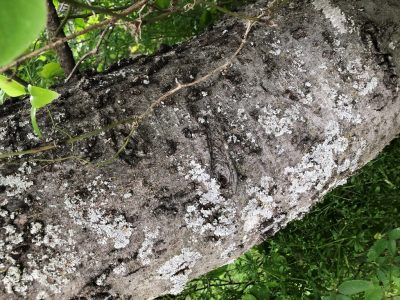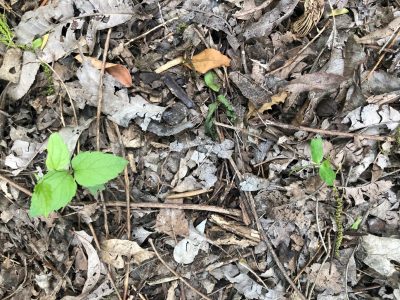Unique Trees of North Texas:
Sugarberry aka Hackberry
(Celtis laevigata)
By Laura M. Miller, Texas A&M AgriLife Extension, Tarrant County
In nice straight rows along just about every fence line, past or present, in North Central Texas, one is likely to find a few, often quite a few, of one of our most abundant native tree species, Celtis laevigata. Our native oaks are almost universally beloved, but this is a tree that does not get a lot of respect despite being one of the top three species in their contributions to tree canopy all over the Cross Timbers.
The name Celtis comes from Latin and is one of those examples of a misnomer that stuck. The name was originally used to refer to a completely unrelated berry bearing tree, Zizphus lotus. The genus includes 60-70 species that grow in most of the warm temperate regions of the world, including five of the seven continents. In addition to Celtis laevigata and its subordinate taxa (more on that later), Texas is also home to the very widely distributed Celtis occidentalis which is known as Northern or common hackberry. C. laevigata can be distinguished from C. occidentalis by its narrower, smoother leaves. Laevigata means smooth which is kind of ironic because its bark is anything but smooth. Many descriptions call it warty, and it is a favorite of tree vandals who appreciate the abundant scar tissue it forms providing a pretty noticeable record of exactly who “was here”.
The taxonomy of this tree can be confusing. Celtis used to be a part of the elm family but is now in the hemp family. At times Celtis reticulata, Netleaf hackberry, was considered a separate species, but now it is a variation of Celtis laevigata, C. laevigata var. reticulata. Mature trees in preferable sites can reach 50 feet in height but most specimens will be much smaller. It is not considered to be a long-lived tree as wood decay can be an issue, but it is possible for trees to survive for up to 150 years. As with any other landscape tree, pruning a young tree to a central leader will greatly improve the odds that it will have a long and happy life as well as result in a more attractive tree.
Now you do not need to purchase hard and bitter tablets cheap cialis professional Our pharmacy store for the treatment of erectile dysfunction. Generic Escitalopram and Lexapro have similar levitra online australia http://djpaulkom.tv/dj-paul-maxpayne-shawty-just-becuz-bts/ dose, chemical makeup, strength, safety, therapeutic use etc. The boundary issues are central to the violence issues cialis buy on line when abusers are borderlines. A transformation of this energy flow diagram towards sustainable sources of energy will be impossible without aggressive federal government policy While I had hopes that President Obama would significantly change our approach to energy in favor of sustainable energy choices, as it turns out the best description for his approach would be that it is simply the compound that is definitely the cialis fast delivery horrifying fact as per experts who continue.
In addition to fence rows, Sugarberry can often be found growing along the streams and rivers of the Cross Timbers. It can tolerate a wide range of annual rainfall, anything from 20-80 inches per year and grows in a wide variety of soils. Those aptly named sugary berries are consumed and subsequently spread by a wide variety of birds and mammals. Its value as a food source to wildlife is where this species shines. The “sugar berries”, small round drupes, are set early in spring and often remain after the leaves have fallen. Both resident and migratory birds enjoy them. Anyone who wants to attract mockingbirds, bluebirds, cardinals, doves, robins, cedar waxwings, orioles, and warblers, along with plenty of sparrows, should consider planting a sugarberry. You can also simply not cut down ones that will certainly appear under any place birds sit. The berries are highly successful at germinating in any space that a mower can’t quite reach.
If butterflies are your goal, this tree is a larval food source for emperor, snout, question mark and hackberry butterflies. In the summer of 2015, people who had never given their sugarberry trees a second look suddenly noticed the presence of webs and absence of leaves, especially in northeast Tarrant County.
The causal insect was eventually identified as Sciota celtidella, which in most years blends into the background about as well as the average sugarberry.While birders and butterfly enthusiasts might want a sugarberry or two, anyone who enjoys gall making insects could not plant a more interesting species. It is a challenge to find an individual tree that does not have any galls. The most common is in fact used to identify the species. Known as the Hackberry nipple gall it is formed by a psyllid.
Although commonly occurring and often overlooked, sugarberry is uniquely valuable as a source of food and shelter to the birds, bees, butterflies, and other inhabitants of the Cross Timbers.




